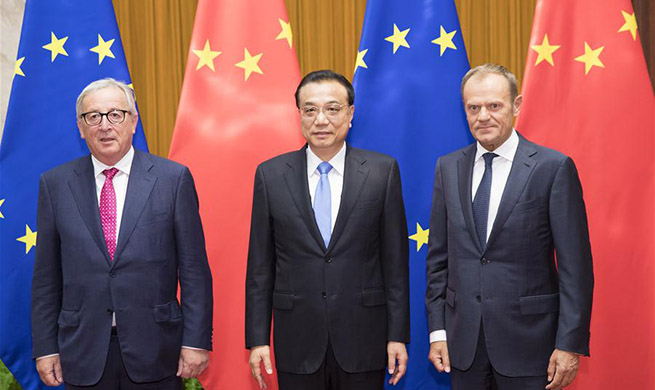NEW YORK, July 16 (Xinhua) -- A Chinese scientist working in the U.S. has invented a novel tool to measure the behavior of electrons in materials, which can improve the performance of devices in electronics, chips, IT, sensors and energy.
The project has been verified by experiments from both the industry and the academia, including data from General Motors and Columbia University, and will potentially be used by IBM, professor Shuang Tang told Xinhua on Saturday in New York City.
The result was reported in Tang's article Extracting the Energy Sensitivity of Charge Carrier Transport and Scattering, which was published on July 13 by Scientific Reports, an online sub-journal of Nature.
The project has been under research for four years, finished partially at the Massachusetts Institute of Technology and SUNY Poly, a campus built jointly by New York State government and frontier industrial companies, including IBM and GlobalFoundries, Tang said.
It is well known that in electronic devices, chips and various sensors, electrons carry and transport information. In thermoelectricity generators and thermoelectric refrigerators, electrons carry and transport energy and entropy.
Electrons, however, will be scattered and resisted by defects, impurities, lattice vibrations, grain boundaries and so on during the transport. Some scattering and resistance will jeopardize the performance of computer chips, electronic and IT devices, while some will benefit the energy and refrigeration efficiency.
Therefore, detecting the scattering and transport mechanisms of electrons in materials is very vital for improving such devices.
However, there has not been such a detecting tool until Tang's invention.
Tang said he discovered that the maximum value of the Seebeck coefficient will change with scattering mechanisms, and made this tool with this discovery.
He has tested this tool in low, room and high temperatures, and found it performs better than traditional methods at all tested temperatures. He has also tested the tool in various novel materials, including graphene, black phosphorene and transition metal dichalcogenide, and found its usefulness in improving the materials' functions.
"Understanding the electronic scattering and transport mechanisms is the essence for improving device performance in various applications. This result of Prof. Shuang Tang has provided the electronic industry with a key tool to its future development," professor Qing Hao from the University of Arizona commented.

















